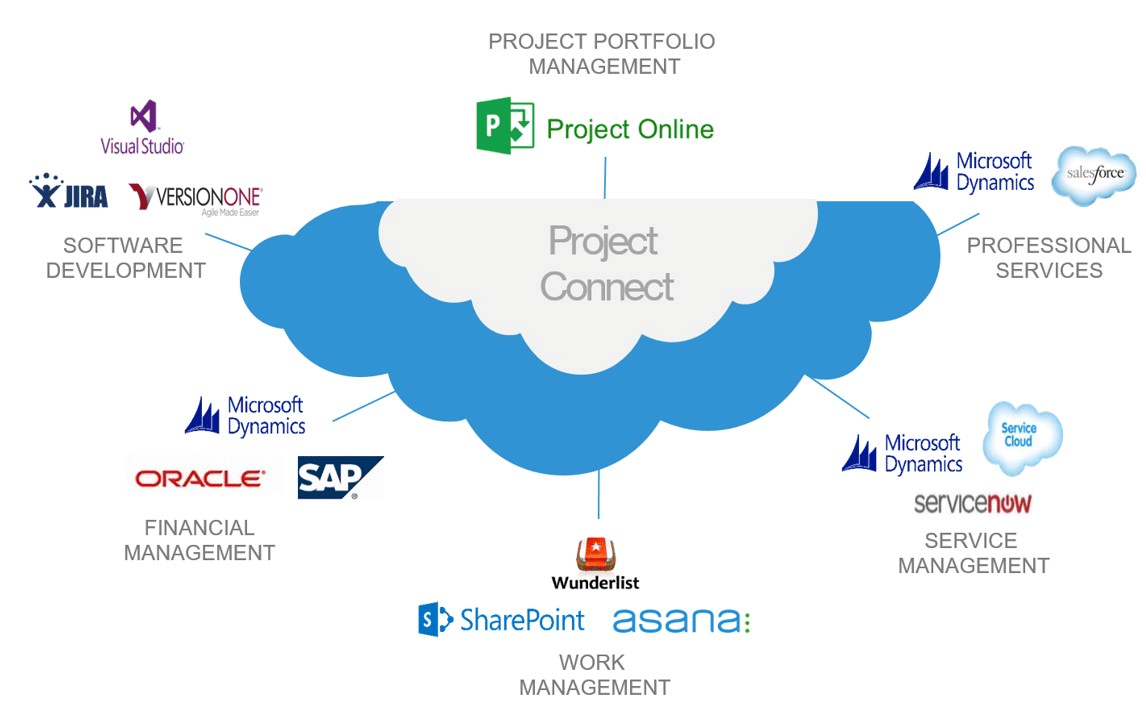
25 Jul PPM for the Modern IT Organization – Extending its Reach with Integration
The following key trends are compelling progressive IT organizations to adopt an integration strategy to help facilitate improvements & innovations. While this impacts IT business as a whole, the focus of this blog post will be on the value of integration for IT PPM.
SaaS / Cloud Applications
It is obvious that cloud-based software / (SaaS) is being rapidly adopted for business use, enabling organizations to harness the Internet more effectively to meet their needs. It has completely infiltrated the PPM market as organizations of all sizes are investing in cloud computing. This has resulted in a proliferation of cloud-based best of breed applications such as ITSM, ALM, PPM & other work management tools being used by teams across IT.
Business Culture of Agility
In the past, organizations have focused on specific, isolated work in the traditional project management model. With today’s technology driven, fast pace nature of business – project management is shifting to a more mature methodology that supports a variety of approaches. This has resulted in an variety of applications that support different project management methodologies, such as agile or iterative.
In PMI’s Pulse of the Profession article, “Capturing the Value of Project Management Through Organizational Agility” their research confirms that organizations using an assortment of project management methodologies is more successful in the current state of business agility.
“Smart organizations realize that using agile techniques, such as Scrum or DevOps, is not the only—or even the best—indicator of an organization’s speed or flexibility. In fact, the most agile organizations are more likely to use several different project management approaches, including agile/incremental/iterative project management practices (65 percent), Lean (55 percent), Waterfall (48 percent), and Extreme (37 percent).”
Extending the Project Portfolio
Another key trend in PPM is extending the portfolio beyond solely projects. IT organizations recognize the value of a more integrated approach that includes managing the entire project, application and resource portfolio. Extending in the portfolio to incorporate both application and resources, integration with both software development applications as well as IT service management is necessary. With this level of visibility, IT can quickly adapt to changes necessary to support business objectives focusing on results and value.
The Result: PPM Integration is a Must Have
As PPM has extended its reach, integration has become a necessity. In the Forrester report titled, “What’s Ahead for PPM? Open yet Integrated Is the Name of the Game,” analyst Margo Visitacion states the ability to integrate with HR and vendor management, financial management, application lifecycle management, service management, and other systems that are crucial to PPM solutions.
Forrester recommends companies focus on the following key integration areas in order to recognize the true power of PPM:
– Integration with labor information to show internal resource capacity
– Integration with financial systems to support budget and project accounting
– Integration with Application Lifecycle Management (ALM) tools to enable realistic baseline schedule tracking
– Integration with service management tools for improved visibility into resource demand.
Integration Approach for Modern IT PPM Solutions
With the cloud, organizations have a better option than custom integrations. The days of custom integrations are no longer necessary. There are several key components to custom integrations.
– The integration process itself
– Navigation of the API – which includes learning the proprietary API’s of each application that is being integrated
– Monitoring tools that will provide logging in order to simplify error resolution
– Redundancy mechanisms to automatically handle scenarios when/if the applications become unavailable
– The resiliency to support the frequent release cycles of each SaaS application & their corresponding APIs
– Business logic that is often necessary for data conversion
It is common for organizations to only account for the integration process itself, without addressing the other critical functionality. This often results in spending an immense amount of time maintaining their custom code. Savvy businesses are seeking integration solutions that offer the ability to build, deploy, and manage integration processes.
SaaS based integration platforms that are cost-effective, scalable, and flexible. Internal IT resources can be leveraged for strategic business driven initiatives instead of managing a custom integration. By adding predefined integration templates, companies are now effectively connecting reporting and visibility to HR, finance, ALM, service management and help desk.
Wicresoft OneConnect for Project Online
Wicresoft’s enterprise-class, cloud-based OneConnect solution simplifies integration between Microsoft Project Online and other best of breed applications. Free your team from time-sucking manual steps & get a comprehensive view of your business. OneConnect allows project online to integrate with key best of breed applications through out-of-the-box connectors, updated & managed by Wicresoft. It also provides for pre-built business logic & mapping processes and offers end-to-end integration service managed by Wicresoft.
No custom coding. No hardware. No custom APIs.
Wicresoft’s OneConnect leverages standards-based interoperability. It is built on the Azure cloud platform that has the power and services necessary to support scale & growth, Wicresoft OneConnect utilizes existing & exposed APIs to integrate critical data with Project Online instances. For more information on Wicresoft’s OneConnect solution, please click here.


